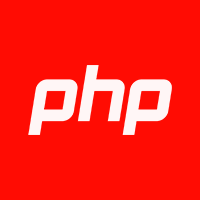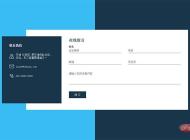-

- RSS订阅如何流量统计?
- 统计RSS流量需通过服务器日志分析下载量或在RSS内容中嵌入追踪像素统计阅读曝光量,因传统JavaScript统计工具在不执行脚本的RSS订阅器中无效。
- XML/RSS教程 . 后端开发 481 2025-09-03 08:54:01
-

- XML如何与机器学习整合?
- XML数据需通过解析、扁平化、特征工程转换为机器学习可用格式,核心是将树形结构转为表格数据,提取数值、类别、文本等特征,并应对命名空间、Schema变化等挑战,通过自动化流程提升效率与模型性能。
- XML/RSS教程 . 后端开发 560 2025-09-03 08:50:02
-

- XQuery查询示例有哪些?
- XQuery可通过doc()函数从多个XML文档检索数据,如关联books.xml与authors.xml中author_id与id字段,结合for、where、return实现数据联查,并支持命名空间声明及HTML转换。
- XML/RSS教程 . 后端开发 741 2025-09-03 08:48:02
-

- RSS更新频率如何设置?
- 答案:RSS更新频率需根据内容类型和用户需求动态调整,发布者应确保实时同步新内容,订阅者则需平衡及时性与资源消耗。新闻类内容宜每5-15分钟更新,深度文章可每日或每周检查一次,播客等周期性内容按发布节奏设定。智能订阅器可通过自适应策略、用户设置和网络状况优化抓取频率,提升效率与体验。同时,稳定更新有助于增强用户信任和SEO间接收益。
- XML/RSS教程 . 后端开发 745 2025-09-03 08:43:01
-

- XSD验证失败常见原因?
- XSD验证失败主要因命名空间不一致、数据类型不匹配、结构顺序错误、必填项缺失或基数不符;需逐一核对XML与XSD的命名空间、数据类型、元素顺序、出现次数及约束规则,结合验证器错误信息精确定位并修正问题。
- XML/RSS教程 . 后端开发 503 2025-09-03 08:23:01
-

- XQuery如何分组数据?
- XQuery通过FLWOR表达式中的groupby子句实现数据分组,支持按一个或多个键值将序列项分组,结合current-group()函数可对组内成员进行聚合或重构。其与SQL的groupby类似,但XQuery能直接处理嵌套的XML结构,输出可为复杂XML,灵活性更高。多级分组可通过嵌套FLWOR表达式实现层次化分组,或在单个groupby中使用多个分组键形成复合键分组。性能优化包括提前过滤数据、预计算分组键、利用索引、避免重复遍历current-group()及精简输出结构,以减少内存消耗
- XML/RSS教程 . 后端开发 702 2025-09-03 08:17:01
-

- XQuery如何分布式处理?
- XQuery的分布式处理依赖底层引擎,主要通过分布式XML数据库(如MarkLogic)或转换至大数据框架(如Spark)实现。前者利用数据分片、分布式索引和查询优化,使XQuery透明执行;后者将XML转为JSON/Parquet,用SparkSQL或DataFrameAPI模拟XQuery逻辑,结合UDF处理复杂操作,适用于多源数据场景。自定义方案则通过并行运行XQuery引擎处理分片数据后聚合结果,适合特殊需求。传统XQuery难分布式因缺乏任务分解机制,依赖全局上下文,而分布式数据库通过
- XML/RSS教程 . 后端开发 657 2025-09-03 08:16:01
-

- XPath如何选择兄弟节点?
- 使用following-sibling::和preceding-sibling::轴可选择当前节点的前后兄弟节点,结合谓词可按标签名、属性、位置等条件精确筛选,通过|操作符联合两个轴可获取所有兄弟节点。
- XML/RSS教程 . 后端开发 179 2025-09-03 08:15:01
-

- XML转换到HTML的方法?
- 答案是:XML转HTML主要有XSLT、JavaScriptDOM操作和服务器端解析三种方式。XSLT适合结构化数据与展示分离的场景,实现内容与表现解耦;JavaScript在浏览器端灵活但面临跨域、性能和SEO问题;服务器端转换则在SEO、性能、安全和数据整合方面优势显著,适用于大型、内容驱动型项目。
- XML/RSS教程 . 后端开发 855 2025-09-03 08:04:01
-

- XSLT如何条件处理?
- XSLT中的条件处理通过xsl:if和xsl:choose结合XPath实现,xsl:if适用于单一条件判断,xsl:choose用于多重互斥条件及默认情况处理,XPath提供强大的表达式支持,如逻辑运算、函数和轴,确保转换的灵活性和精准性。
- XML/RSS教程 . 后端开发 767 2025-09-02 11:51:01
-

- XML如何与JavaScript交互?
- JavaScript通过XMLHttpRequest或fetchAPI获取XML数据,结合DOMParser解析为DOM树,再利用DOMAPI进行读取、修改等操作,实现与XML的交互。
- XML/RSS教程 . 后端开发 924 2025-09-02 11:47:01
-

- XML与CLR类型如何映射?
- XML与CLR类型映射是将XML数据转换为.NET对象的过程,主要通过XmlSerializer或DataContractSerializer实现,前者适用于结构固定的XML,后者更注重数据契约与版本兼容性,性能更优;对于复杂场景,可采用LINQtoXML手动解析。选择方案需权衡控制粒度、性能、兼容性及维护成本。
- XML/RSS教程 . 后端开发 213 2025-09-02 11:46:01
-

- RSS如何集成到浏览器?
- 最直接的方法是安装RSS浏览器扩展,如RSSHubRadar或rsspreview,它们能自动检测网页RSS源并支持一键订阅,简化内容发现与管理。
- XML/RSS教程 . 后端开发 870 2025-09-02 11:43:01
-

- XML验证的基本方法有哪些?
- XML验证通过DTD、XSD和Schematron确保XML文档结构和数据符合预设规则。DTD语法简单但功能有限,适用于简单场景;XSD支持丰富数据类型和命名空间,是主流选择;Schematron用XPath表达复杂业务逻辑,补充XSD不足。选择时应根据需求:XSD适合大多数项目,DTD用于简单或遗留系统,Schematron处理跨元素规则。实际挑战包括Schema版本管理、性能开销、错误信息不友好等,可通过版本控制、异步验证、错误转换及工具集成应对。验证能保障数据一致性、提升系统互操作性、降低
- XML/RSS教程 . 后端开发 348 2025-09-02 11:36:02
-

- XML与关系数据库如何映射?
- XML与关系数据库映射需根据数据结构和业务需求选择扁平化、父子表、聚合列等策略,结合数据库原生XML/JSON支持与混合建模,通过批量操作、事务管理、索引优化及增量同步等手段,在保证数据一致性的同时提升同步性能。
- XML/RSS教程 . 后端开发 518 2025-09-02 11:35:01

PHP讨论组
组员:3305人话题:1500
PHP一种被广泛应用的开放源代码的多用途脚本语言,和其他技术相比,php本身开源免费; 可以将程序嵌入于HTML中去执行, 执行效率比完全生成htmL标记的CGI要高许多,它运行在服务器端,消耗的系统资源相当少,具有跨平台强、效率高的特性,而且php支持几乎所有流行的数据库以及操作系统,最重要的是





























